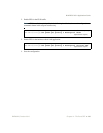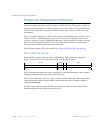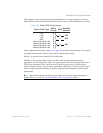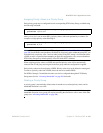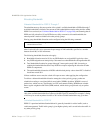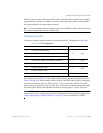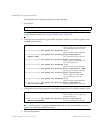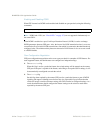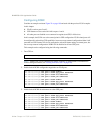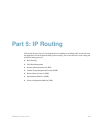
BLADEOS 6.5.2 Application Guide
BMD00220, October 2010 Chapter 14: FCoE and CEE 211
Data Center Bridging Capability Exchange
Data Center Bridging Capability Exchange (DCBX) protocol is a vital element of CEE. DCBX
allows peer CEE devices to exchange information about their advanced capabilities. Using DCBX,
neighboring network devices discover their peers, negotiate peer configurations, and detect
misconfigurations.
DCBX provides two main functions on the G8124:
Peer information exchange
The switch uses DCBX to exchange information with connected CEE devices. For normal
operation of any FCoE implementation on the G8124, DCBX must remain enabled on all ports
participating in FCoE.
Peer configuration negotiation
DCBX also allows CEE devices to negotiate with each other for the purpose of automatically
configuring advanced CEE features such as PFC, ETS, and (for some CNAs) FIP. The
administrator can determine which CEE feature settings on the switch are communicated to and
matched by CEE neighbors, and also which CEE feature settings on the switch may be
configured by neighbor requirements.
The DCBX feature requires CEE to be turned on (see “Turning CEE On or Off” on page 192).
DCBX Settings
When CEE is turned on, DCBX is enabled for peer information exchange on all ports. For
configuration negotiation, the following default settings are configured:
Application Protocol: FCoE and FIP snooping is set for traffic with 802.1p priority 3
PFC: Enabled on 802.1p priority 3
ETS
Priority group 2 includes priority values 0 through 2, with bandwidth allocation of 10%
Priority group 3 includes priority value 3, with bandwidth allocation of 40%
Priority group 4 includes priority values 4 through 7, with bandwidth allocation of 50%



